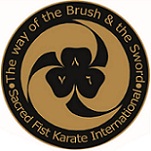|
The last
of the Angampora gurus existed during the Kandyan kingdom. The sport, that
had withstood the test of time, faced its biggest challenge during this era.
The British, two years after capturing Kandy and gaining control over the
entire island, passed a law to ban Angampora in 1817.
The penalty for anyone found practising the art was harsh. Those who
breached this law were shot below the knee. Many gurus and students gave up
the art in fear of punishment. The high status the sport had earned was lost
and it was looked upon as the game of criminals and vagabonds. However, a
few continued to practise this traditional art in secretive places.
The weapons
A variety of weapons are used in Angampora. One of the most lethal weapons
is the 'Velayudaya', a whip like apparatus made of four double-edged
flexible strips of metal. A practitioner uses a pair of this apparatus to
obtain maximum effect. However, only the most experienced fighters use these
weapons, as there is a risk of cutting oneself badly while lashing out at an
adversary.
Then there is the combat sword. This thick instrument is custom made for the
fighter. The length of the sword is similar to the distance between the
fighter's fingertips and his under arm. A smaller variety of sword, known as
the 'Keti Kaduwa', is also used. This is used together with a small shield
or 'Paliya', which is about the size of a standard wall clock.
The technique
A beginner is first taught basic warm up exercises. Later a student is
taught more specialized exercises which are connected to the art. Once a
student is found competent in performing these specialized exercises he or
she progresses to the actual art of combat.
The first skill a student learns is the `Mulla Panina' exercise or basic
foot movement. This is done to the rhythm of the geta bera drums, a movement
that takes the form of a dance. The basic principle behind Mulla Panina is
to learn to use one's feet. This will help a practitioner of Angampora to
sidestep an attacker and keep one's balance at all times.
Once this basic foot movement is mastered a student learns a more advanced
foot movement known as 'Gaman Thalawa'. Gaman Thalawa is structured around
the movements of big cats. This feline like movement makes the fighter move
in a rhythmic semicircular pattern, similar to the moving pattern of an
angry tiger in a cage.
This foot movement coupled with Ath Haramba or hand movement results in what
is known as Amaraya. Amaraya is the use of Gaman Thalawa in a sparring
contest against an opponent. The contest between two as mentioned at the
beginning of this article was an Amaraya. Here the two opponents move around
sizing each other up in rhythmic feline like movements.
Then there are the three main hand movements or Harambas. I already
mentioned the Ath Haramba, which is the use of one's bare hands in combat.
In Ath Haramba the student is taught to take on the attacks of adversaries
from four directions. An integral part of this is the knowledge of targeting
sensitive points in the body when striking an opponent. |













